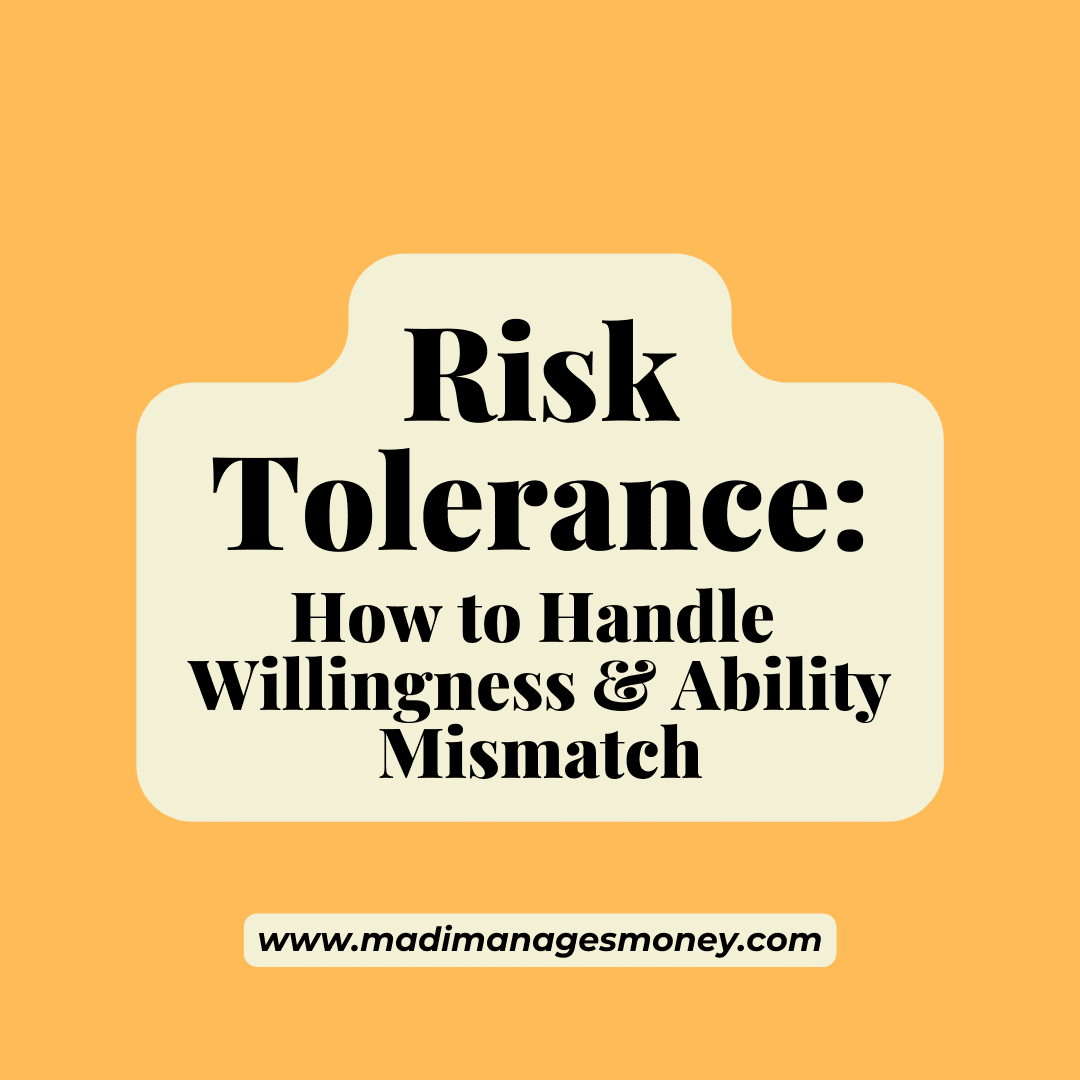Here’s how to handle what I’d call a risk tolerance mismatch.
Risk tolerance is ubiquitous in the world of personal finance and investing, but new investors often overlook its importance. Sometimes, a proper introduction isn’t made until it’s too late – when you’re over-risked and panic-sell during a down market or under-risked and get FOMO when stocks soar.
Knowing your family’s risk tolerance is a must-have for successful investing. After all, the amount of risk you take is one of the biggest determinants of how much your money compounds over time.
A common way to determine your risk tolerance is by taking a risk tolerance questionnaire. A risk tolerance questionnaire is like a personality quiz for your feelings about risk and investments.
Your risk tolerance is made up of two components: your willingness and ability to take risk. Sometimes, they don’t agree.
Willingness
“Give me the riskiest shit you got.” – An actual client from several years ago who, obviously, had an abundantly high willingness to assume risk.
Willingness is all about your feelings. Do you feel queasy at the thought of losing money? Are you worried that your investments won’t grow as much as they could? Would you consider selling, or investing more, if the stock market sold off? These are just a few questions you might ask yourself to gauge your willingness.
Willingness is so important because it’s an indicator of how you’ll react when the market is making big moves. Someone who takes more risk than they’re comfortable with might make a detrimental decision and sell when their account is down (when they would have been better off holding on).
Willingness is also critical to sort out with your partner. It’s common that one spouse is a more aggressive investor than the other. If one wants to swing for the fences while the other wants to play it safe, a compromise might need to be made. A spouse that can’t sleep at night isn’t a recipe for investing success or marital bliss.
In fact, the pandemic forced many couples to have realtalk about their willingness to take risk. These discussions focused on health and safety, but similar logic applies.
Families had to balance between getting back out in public versus playing it safe quarantining. Suddenly, we all found ourselves married to that renegade in Target with no mask or the steadfast grocery-wiper.
Just like investing, gaining consensus was required to effectively navigate the pandemic. (As you can see from the sweet note below from my husband, it’s a work in progress. 😘) Agreeing on a level of investment risk that you can both stick to during ups and downs will serve your family well.

Ability
Ability to take risk is the other, more objective, half of the equation. It’s determined largely based on your financial situation and your investing time horizon.
Families who have a higher ability to take risk usually have a longer time horizon and stronger financial position. A long time horizon is why younger investors, like Gen Z and millennials, have a higher ability to take risk on average.
For example, a family that has paid off high-interest-rate debt and built an emergency fund is in a better position to invest more aggressively. Chances are good they won’t be in a crunch and need to touch their investment accounts anytime soon. This leaves them time to stay in the market, which means a long enough time to recover from a dip should markets fall.
The inverse would be a family that has credit card debt and no emergency fund. Without any extra cushion (or like the finance bois say: liquidity), chances are good they might need their invested money sooner rather than later. That becomes a problem if they’d need to sell riskier investments at a loss.
Related Post: Is My Family Ready to Invest?
How to Handle Willingness & Ability Mismatch
What if you have a mismatch between your willingness and ability to take risk? This conundrum is best solved on a case-by-case basis, so here are some principles to help you work through it:
- Don’t invest riskier than you can withstand. Selling out of aggressive investments (like stocks) if and when they fall is often worse than investing more conservatively all along.
- Align your investments with your financial goals. Keeping your eyes on the prize makes holding on during tough times easier.
- Consider your time horizon to be the most important factor in determining risk.
- When in doubt, consult a professional. A financial advisor can help you determine the best course of action.
Risk: Investing’s True North
The amount of risk you take is the most important factor in how much money you make over time. This applies to investing and, I’d argue, more broadly to life in general.
Don’t be fooled by get-rich-quick trading schemes on Instagram or fall for the allure of promises of risk-free investing. There’s always a catch.
Understanding your risk tolerance prepares you to invest in a way that grows your family’s wealth without losing your cool when markets are bumpy. Know your risk tolerance, stick to the plan, and trust the process!
Related Post: Should You Be an Aggressive Investor?
The opinions voiced in this material are for general information only and are not intended to provide specific advice or recommendations for any individual. To determine which investments may be appropriate for you, consult with your financial advisor.

